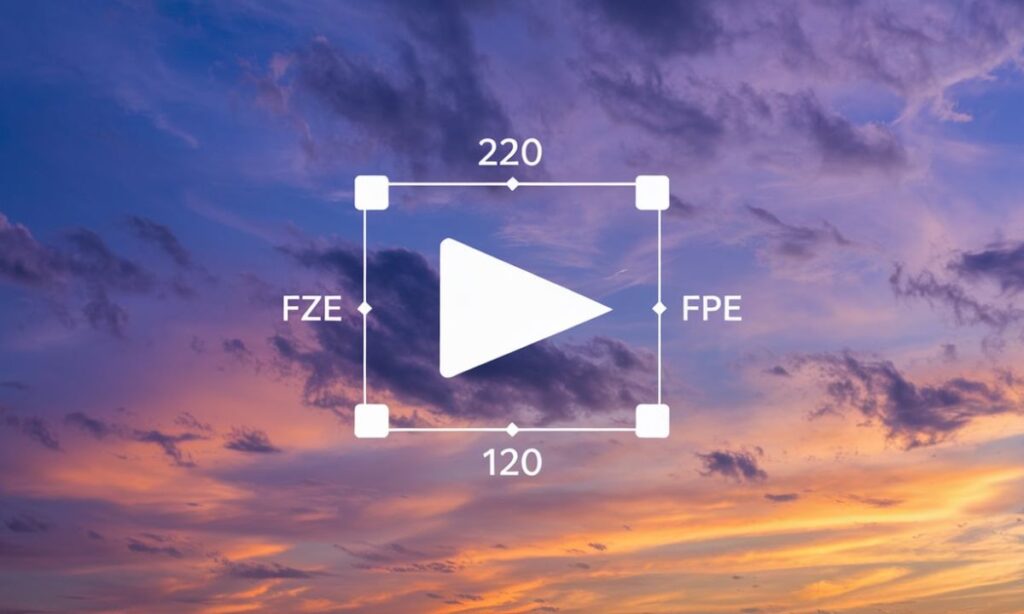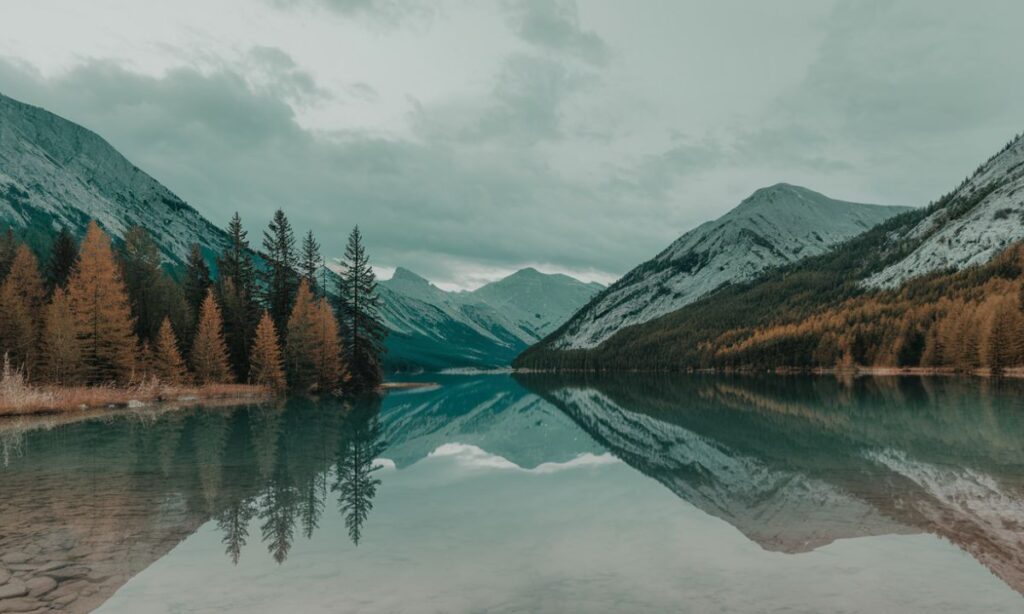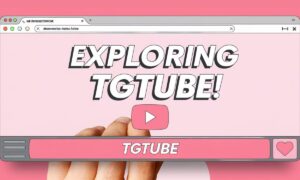In the world of visual storytelling and UI/UX design, backgrounds play a crucial role in setting the tone and enhancing user experience. Design:5exwzo_yaxi= Backgrounds have become an integral part of modern graphic design, offering endless possibilities to create stunning aesthetics and captivating user interfaces.
This comprehensive guide will explore the key elements, types, tools, and trends in Design:5exwzo_yaxi= Backgrounds, helping you transform your projects into visually rich and engaging experiences.
Key Elements of Effective “Design:5exwzo_yaxi= Backgrounds”

Color Theory in “Design:5exwzo_yaxi= Backgrounds”
Color is the foundation of any great Design:5exwzo_yaxi= Background. Understanding color theory is essential for creating visually appealing and emotionally resonant backgrounds. Here’s a deep dive into the world of color in background design:
- Color Psychology: Different colors evoke different emotions and associations. For instance:
- Red: Excitement, passion, urgency
- Blue: Trust, calm, professionalism
- Green: Nature, growth, harmony
- Yellow: Optimism, creativity, warmth
- Color Palettes: Creating harmonious color combinations is crucial for effective Design:5exwzo_yaxi= Backgrounds. Consider these popular palette types:
- Monochromatic: Variations of a single hue
- Complementary: Colors opposite on the color wheel
- Analogous: Colors adjacent on the color wheel
- Triadic: Three colors evenly spaced on the color wheel
- Contrast and Harmony: Balancing contrast and harmony in your Design:5exwzo_yaxi= Backgrounds is key to creating visually striking yet cohesive designs. High contrast can draw attention to specific elements, while harmonious colors create a sense of unity.
“Color is a power which directly influences the soul.” – Wassily Kandinsky
Case Study: Spotify’s Color-Rich Background Design
Spotify’s use of vibrant, gradient backgrounds in their playlist covers exemplifies effective color usage in Design:5exwzo_yaxi= Backgrounds. They employ bold, contrasting colors to create visually distinct playlist identities while maintaining a cohesive brand aesthetic. This approach not only enhances user experience but also aids in content discovery and brand recognition.
Textures and Patterns in “Design:5exwzo_yaxi= Backgrounds”
Textures and patterns add depth and visual interest to Design:5exwzo_yaxi= Backgrounds, creating a tactile feel in digital spaces. Here’s how to effectively incorporate them:
- Types of Textures:
- Organic: Natural, irregular patterns (e.g., wood grain, marble)
- Geometric: Regular, repeating shapes
- Abstract: Non-representational, artistic textures
- Pattern Styles:
- Repeating: Consistent, tileable patterns
- Randomized: Irregular, non-repeating designs
- Gradual: Patterns that evolve across the background
- Balancing Complexity: When using textures and patterns in Design:5exwzo_yaxi= Backgrounds, it’s crucial to balance visual interest with readability and usability. Complex patterns can be visually striking but may overwhelm content if not used judiciously.
Table: Texture and Pattern Intensity Guide
| Intensity Level | Best Used For | Considerations |
| Subtle | Text-heavy designs, minimalist aesthetics | Enhances without distracting |
| Moderate | Balancing visual interest and content | Adds depth without overwhelming |
| Bold | Creating visual impact, brand statements | Use sparingly to avoid clutter |
Imagery and Graphics in “Design:5exwzo_yaxi= Backgrounds”
Incorporating high-quality imagery and custom graphics can transform your Design:5exwzo_yaxi= Backgrounds from ordinary to extraordinary. Here’s how to make the most of visual elements:
- Choosing the Right Images:
- Relevance: Select images that align with your content and brand
- Quality: Use high-resolution images for crisp, professional backgrounds
- Composition: Consider how the image will interact with overlaid content
- Custom Graphics:
- Vector illustrations: Scalable, clean designs for modern aesthetics
- Icon sets: Create cohesive visual languages across your designs
- Abstract shapes: Add visual interest without overpowering content
- Integration Techniques:
- Overlay effects: Use color overlays to maintain readability of text
- Masking: Create unique shapes and cutouts in your backgrounds
- Layering: Combine multiple images or graphics for depth and complexity
“Design is not just what it looks like and feels like. Design is how it works.” – Steve Jobs
By mastering these key elements of Design:5exwzo_yaxi= Backgrounds, you’ll be well-equipped to create visually stunning and effective backgrounds that enhance your projects and captivate your audience.
Types of “Design:5exwzo_yaxi= Backgrounds”

Design:5exwzo_yaxi= Backgrounds come in various forms, each offering unique advantages and suited to different design goals. Let’s explore the most popular types:
Solid Color Backgrounds: Simplicity and Focus
Solid color Design:5exwzo_yaxi= Backgrounds are a minimalist option that can create a clean aesthetic and modern design. They’re particularly effective when you want to:
- Focus attention on primary content
- Create a sense of spaciousness
- Establish a strong brand identity
Best Practices for Solid Color Backgrounds:
- Choose colors that align with your brand palette
- Use contrasting text colors for readability
- Consider incorporating subtle gradients for depth
Gradient Backgrounds: Modern and Dynamic “Design:5exwzo_yaxi= Backgrounds”
Gradient backgrounds offer a fluid feel and dynamic effect, perfect for creating polished looks in Design:5exwzo_yaxi= Backgrounds. They’re especially popular in mobile interfaces and can add visual interest without overwhelming content.
Types of Gradients:
- Linear: Colors transition in a straight line
- Radial: Colors spread outward from a central point
- Angular: Colors rotate around a central point
Tool Spotlight: CSS Gradient Generator For web designers, CSS gradient generators like cssgradient.io offer an easy way to create and implement custom gradients in your Design:5exwzo_yaxi= Backgrounds.
Patterned Backgrounds: Creating Vivid Visual Interest
Patterned Design:5exwzo_yaxi= Backgrounds use repetitive elements to create vivid interest and make bold statements. They can add visual texture and depth to your designs, but require careful balance to avoid overwhelming the primary content.
Popular Pattern Styles:
- Geometric shapes
- Nature-inspired patterns
- Abstract designs
- Repeating icons or brand elements
Image Backgrounds: Setting the Scene with Photography
Image-based Design:5exwzo_yaxi= Backgrounds can create powerful emotional tones and enhance visual storytelling. They’re often used in hero sections to immediately capture attention and set the mood for the entire design.
Tips for Effective Image Backgrounds:
- Use high-resolution images to ensure quality across devices
- Consider the placement of text and other elements over the image
- Experiment with duotone effects or color overlays for brand consistency
Video Backgrounds: Bringing Motion to “Design:5exwzo_yaxi= Backgrounds”
Video backgrounds offer an immersive experience and can significantly enhance user engagement. However, they require careful implementation to ensure performance optimization, especially on mobile devices.
Best Practices for Video Backgrounds:
- Keep videos short and loop seamlessly
- Provide static fallbacks for slower connections
- Ensure the video doesn’t distract from primary content
- Optimize file size for quick loading
By understanding and skillfully implementing these various types of Design:5exwzo_yaxi= Backgrounds, you can create visually stunning and effective designs that elevate your projects and enhance user experience.
Popular Tools for Creating “Design:5exwzo_yaxi= Backgrounds”

To bring your Design:5exwzo_yaxi= Backgrounds to life, you’ll need the right tools. Here’s an overview of some of the most popular options:
Adobe Photoshop: Advanced Editing and Design Features
Photoshop is a powerhouse for creating complex and highly customized Design:5exwzo_yaxi= Backgrounds. Its advanced editing capabilities and wide range of design features make it a go-to choice for professional designers.
Key Features for Background Design:
- Layer styles for adding depth and texture
- Gradient tools for creating smooth color transitions
- Pattern maker for creating seamless repeating backgrounds
- Extensive filter gallery for adding visual effects
Pros and Cons of Photoshop for Background Creation:
| Pros | Cons |
| Powerful editing capabilities | Steep learning curve |
| Extensive plugin ecosystem | Subscription-based pricing |
| Precise control over design elements | Resource-intensive |
Canva: Easy-to-Use Design Platform for Beginners
Canva offers an intuitive, user-friendly platform for creating professional-looking Design:5exwzo_yaxi= Backgrounds, even for those with limited design experience.
Canva’s Background Design Capabilities:
- Pre-made templates for quick starts
- Drag-and-drop interface for easy customization
- Built-in photo editor for basic image adjustments
- Collaboration features for team projects
“Simplicity is the ultimate sophistication.” – Leonardo da Vinci
This quote perfectly encapsulates Canva’s approach to design tools, making sophisticated Design:5exwzo_yaxi= Backgrounds accessible to all.
Figma: Collaboration and UI/UX Design Tool
Figma has gained popularity for its collaborative features and powerful design capabilities, making it an excellent choice for creating Design:5exwzo_yaxi= Backgrounds in team environments.
Figma’s Unique Features for Background Design:
- Real-time collaboration
- Vector networks for creating complex shapes
- Auto layout for responsive designs
- Robust plugin ecosystem
Tutorial: Creating a Gradient Mesh Background in Figma
- Create a frame for your background
- Use the rectangle tool to create overlapping shapes
- Apply different colors to each shape
- Use the blur effect to create a soft, mesh-like appearance
- Adjust opacity and blending modes for desired effect
Sketch: Popular Tool for Web and Vector Design
Sketch is widely used for creating vector-based Design:5exwzo_yaxi= Backgrounds, particularly for web and mobile interfaces.
Sketch’s Strengths for Background Creation:
- Artboard-based workflow for multi-device designs
- Symbols for reusable background elements
- Powerful vector editing tools
- Extensive library of plugins and resources
By leveraging these tools effectively, you can create stunning Design:5exwzo_yaxi= Backgrounds that enhance your projects and captivate your audience. Each tool offers unique strengths, so choose the one that best fits your design needs and skill level.
Best Practices for “Design:5exwzo_yaxi= Backgrounds”

To create truly effective Design:5exwzo_yaxi= Backgrounds, it’s crucial to follow best practices that ensure visual harmony, responsiveness, and continuous improvement. Let’s explore these key areas:
Ensuring Visual Harmony and Content Balance in “Design:5exwzo_yaxi= Backgrounds”
Creating visually harmonious Design:5exwzo_yaxi= Backgrounds involves careful consideration of how background elements interact with foreground content. Here are some principles to keep in mind:
- Visual Hierarchy: Ensure your background doesn’t overpower important content. Use contrast, size, and positioning to guide the viewer’s eye.
- Negative Space: Incorporate ample white space (or negative space) to prevent cluttered designs and improve readability.
- Consistency: Maintain a consistent style across your Design:5exwzo_yaxi= Backgrounds to create a cohesive user experience.
- Accessibility: Ensure sufficient contrast between background and text for readability. Use tools like the WebAIM Contrast Checker to verify your color choices.
Optimizing for Responsiveness in “Design:5exwzo_yaxi= Backgrounds”
With the prevalence of mobile devices, it’s crucial to create Design:5exwzo_yaxi= Backgrounds that look great on all screen sizes. Here are some techniques for responsive background design:
- Flexible Images: Use CSS properties like background-size: cover to ensure images scale appropriately.
- Media Queries: Adjust background styles based on screen size using CSS media queries.
- Mobile-First Approach: Design for mobile screens first, then progressively enhance for larger screens.
CSS Snippet for Responsive Background Images:
css
.responsive-background {
background-image: url(‘your-image.jpg’);
background-position: center center;
background-repeat: no-repeat;
background-size: cover;
background-attachment: fixed;
}
Testing and Iterating on “Design:5exwzo_yaxi= Backgrounds”
Continuous improvement is key to creating effective Design:5exwzo_yaxi= Backgrounds. Here’s how to approach testing and iteration:
- User Feedback: Conduct user surveys and interviews to gather opinions on your background designs.
- A/B Testing: Use tools like Google Optimize to test different background variations and measure their impact on user engagement.
- Analytics: Analyze user behavior metrics to understand how your backgrounds affect site performance and user experience.
- Heatmaps: Use tools like Hotjar to visualize how users interact with your designs.
By following these best practices, you can create Design:5exwzo_yaxi= Backgrounds that not only look great but also contribute to a positive and effective user experience across all devices.
Trends in “Design:5exwzo_yaxi= Backgrounds” for 2024

Staying current with design trends can help your Design:5exwzo_yaxi= Backgrounds feel fresh and contemporary. Here are some of the hottest trends shaping background design in 2024:
Neumorphism in “Design:5exwzo_yaxi= Backgrounds”
Neumorphism, a design trend that combines elements of skeuomorphism and flat design, is making waves in Design:5exwzo_yaxi= Backgrounds. This style creates a soft, extruded plastic look that’s both modern and tactile.
Key Characteristics of Neumorphic Backgrounds:
- Soft shadows and highlights
- Monochromatic color schemes
- Subtle gradients
- Minimalist approach
Tutorial: Creating a Neumorphic Button in CSS
css
.neumorphic-button {
background: #e0e0e0;
border-radius: 50px;
box-shadow: 20px 20px 60px #bebebe, -20px -20px 60px #ffffff;
padding: 15px 30px;
border: none;
color: #333;
font-weight: bold;
}
Dark Mode “Design:5exwzo_yaxi= Backgrounds”
Dark mode continues to gain popularity, offering a sleek, modern look while potentially reducing eye strain and conserving battery life on mobile devices.
Tips for Dark Mode Background Design:
- Use dark grays instead of pure black for a softer look
- Increase contrast for text and important elements
- Use accent colors sparingly for visual interest
- Test designs in both light and dark modes for consistency
3D Elements in “Design:5exwzo_yaxi= Backgrounds”
3D elements are adding depth and interactivity to Design:5exwzo_yaxi= Backgrounds, creating immersive experiences for users.
Ways to Incorporate 3D in Backgrounds:
- Isometric illustrations
- 3D rendered objects
- Parallax scrolling effects
- WebGL-powered interactive backgrounds
Minimalism with Bold Typography in “Design:5exwzo_yaxi= Backgrounds”
The combination of minimalist backgrounds with bold, expressive typography creates striking designs that are both modern and functional.
Best Practices for Minimalist Typographic Backgrounds:
- Use high-contrast color schemes
- Experiment with oversized, bold fonts
- Incorporate subtle animations or hover effects
- Balance negative space with typographic elements
By incorporating these trends into your Design:5exwzo_yaxi= Backgrounds, you can create cutting-edge designs that capture attention and enhance user engagement.
Conclusion
Design:5exwzo_yaxi= Backgrounds are a powerful tool in the modern designer’s arsenal, capable of transforming projects and elevating user experiences. From understanding color theory and texture to mastering various background types and staying current with trends, there’s always room to grow and innovate in background design.
Remember, the key to successful Design:5exwzo_yaxi= Backgrounds lies in balancing aesthetics with functionality, ensuring your backgrounds enhance rather than distract from your content. By applying the principles, tools, and trends discussed in this guide, you’ll be well-equipped to create stunning, effective backgrounds that engage users and bring your designs to life.
Frequently Asked Questions
What are “Design:5exwzo_yaxi= Backgrounds”?
Design:5exwzo_yaxi= Backgrounds are visual elements that form the backdrop of a design, setting the tone and enhancing the overall aesthetic of a project.
How do I create responsive “Design:5exwzo_yaxi= Backgrounds”?
Use CSS properties like background-size: cover, employ media queries, and adopt a mobile-first approach. Ensure backgrounds adapt well to different screen sizes and orientations.
What tools can I use to design “Design:5exwzo_yaxi= Backgrounds”?
Popular tools include Adobe Photoshop, Canva, Figma, and Sketch. Each offers unique features for creating and customizing backgrounds.
Why is color theory important in “Design:5exwzo_yaxi= Backgrounds”?
Color theory helps create visually appealing and emotionally resonant backgrounds. It guides the selection of harmonious color combinations and ensures proper contrast for readability.
What are the latest trends in “Design:5exwzo_yaxi= Backgrounds” for 2024?
Trends include neumorphism, dark mode designs, 3D elements, and minimalism with bold typography.
How to do a custom background on Canva?
In Canva, upload your own image or choose from their library. Use the editing tools to adjust colors, apply filters, or add elements to create a custom background.
How do I choose a background for my design?
Consider your project’s purpose, target audience, brand identity, and content. Ensure the background complements rather than overshadows your main content.
What are backgrounds in design?
Backgrounds in design are the base layers that sit behind the main content. They can be solid colors, gradients, patterns, images, or videos that enhance the overall visual appeal and support the design’s message.








